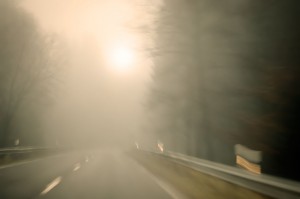 It’s easy to remember to use your headlights at night, but that is not the only time you should turn them on. Headlights are not just there so your can see there you are going in the dark, they also help other drivers see you, and that can prevent an accident in weather conditions that cause poor visibility.
It’s easy to remember to use your headlights at night, but that is not the only time you should turn them on. Headlights are not just there so your can see there you are going in the dark, they also help other drivers see you, and that can prevent an accident in weather conditions that cause poor visibility.
In Some States it’s the Law
Laws on headlight use vary from state to state. For night driving, you are required to use your headlights from sunset to sunrise or from one-half hour before sunset until one-half hour after sunrise, depending on the state. When it comes to using headlights, there is more variance. Some states say you must use them if visibility is less than 500 or 1,000 feet, others require that you turn on your headlights anytime you have to use your windshield wipers, and others have more general instructions.
When You Should Use Your Headlights for Safety during the Day
Rather than simply relying on your local laws to determine when you have to use your headlights, for your own safety consider turning them on anytime visibility is reduced. Even if you do not find the conditions challenging, remember that other drivers may have more difficulty seeing other vehicles than you do. Conditions that call for headlight use include:
- Rain
- Fog
- Hail
- Snow
- Smoke
- Dust storms
- Heavy surface-spray from wet roads, even if the weather has cleared
Use Your Low Beams
In conditions that cause poor visibility you need to use your low beams, whether you are driving at night or during the day. High beams will reflect off of the moisture or particulate matter in the air, making visibility even worse.















